|
Unconstrained Multidimensional Optimization
An Introduction with Examples in Java |
|
Prof. David Bernstein |
| Computer Science Department |
| bernstdh@jmu.edu |
|
Unconstrained Multidimensional Optimization
An Introduction with Examples in Java |
|
Prof. David Bernstein |
| Computer Science Department |
| bernstdh@jmu.edu |
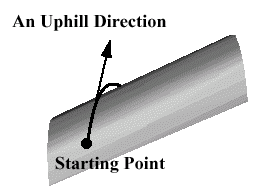
An Illustration of the Ascent Algorithm
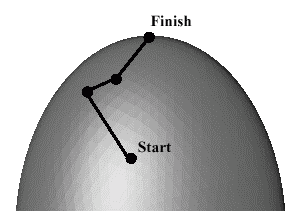
while (You are not at the top of the hill) {
Find an uphill direction and face that way
Walk as far uphill as you can in the direction you are facing
}
A Series of "Bad" Directions

A Really Good Direction
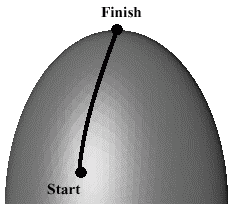
Greed is Not Always Good
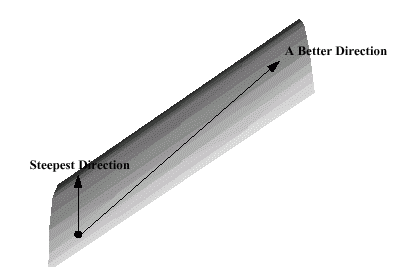
Generating Level Sets
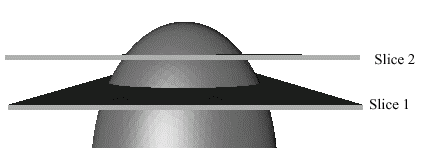
The Level Sets for this Example
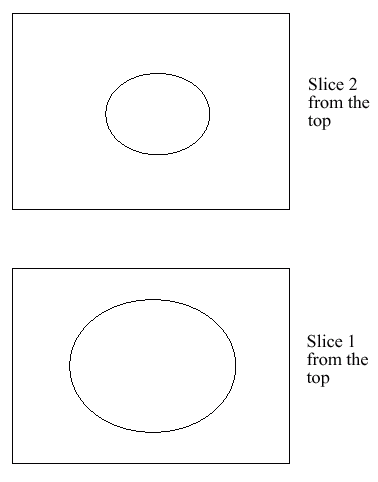
Level Sets in General
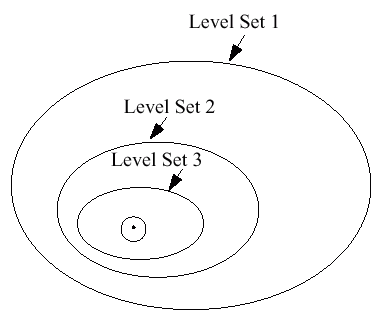
An Illustration
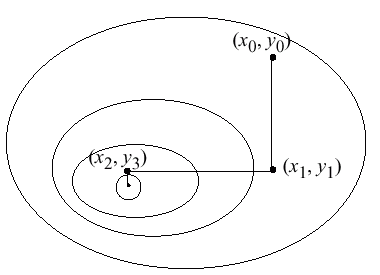
while (You are not at the top of the hill) {
Walk as far uphill as you can in the north/south direction
Walk as far uphill as you can in the east/west direction
}
/**
* The Cyclic Coordinates method for minimizing a function of one
* variable
*
* @author Prof. David Bernstein, James Madison University
* @version 1.0
*/
public class CyclicCoordinates
{
/**
* Minimize a function
*
* @param f The objective function
* @param init The initial solution
* @param tol The convergence tolerance (for the norm of x^k - x^k-1)
* @param maxit The maximum number of iterations to perform
* @return The argmin over [a_0,b_0] of the function theta
*/
public static double[] argmin(Objective f, double[] init,
double tol, int maxit)
{
double change, lambda;
double[] y;
int i, k, n;
// Initialization
k = 0;
n = init.length;
i = 0;
change = tol + 1.0;
y = new double[n];
for (i=0; i <= n-1; i++)
{
f.setdi(i,0.0);
f.setxi(i,init[i]);
y[i] = init[i];
}
// Iterations
while ((change >= tol) && (k < maxit))
{
k++;
change = 0.0;
for (i=0; i <= n-1; i++)
{
f.setdi(i,1.0);
if (i >= 1) f.setdi(i-1,0.0);
lambda = GoldenSection.argmin(f,-20.0,20.0,0.001);
f.setxi(i,f.getxi(i) + lambda);
change += lambda*lambda;
}
f.setdi(n-1,0.0);
for (i=0; i <= n-1; i++)
{
y[i] = f.getxi(i);
}
}
return y;
}
}
/**
* A class that is extended to create specific objective functions
*
* @author Prof. David Bernstein, James Madison University
* @version 1.0
*/
public abstract class Objective
{
private double[] d, x, y;
private int n;
/**
* Explicit Value Constructor
*
* @param size The dimension of the function's domain
*/
public Objective(int size)
{
n = size;
x = new double[n];
d = new double[n];
y = new double[n];
}
/**
* Evalue this function
*
* This method must be overriden for functions that map from R^n to R
*
* @param x The n-dimensional vector argument of the function
* @return The function evaluated at x
*/
public double evaluate(double[] x)
{
double result;
result = 0.0;
return result;
}
/**
* Evalue this function
*
* This method must be overriden for functions that map from R to R
* so that it returns the function evaluation.
*
* For functions that map from R^n to R it should not be overriden
* because it will return the function evalued at x + lambda * d
*
* @param lambda The 1-dimensional argument of the function
* @return The function evaluation
*/
public double evaluate(double lambda)
{
for (int i=0; i <= n-1; i++)
{
y[i] = x[i] + lambda*d[i];
}
return evaluate(y);
}
/**
* @return The dimension of the function's domain
*/
public int getn()
{
return n;
}
/**
* Sets a component of the x vector
*
* @param i The index to set
* @param val The new value of component i
*/
public void setxi(int i, double val)
{
x[i] = val;
}
/**
* Sets the function's x vector
*
* @param val The new value of the argument
*/
public void setx(double[] val)
{
for (int i=0; i <= n-1; i++)
{
x[i] = val[i];
}
}
/**
* Sets a component of the direction vector associated with this function
*
* @param i The index to set
* @param val The new value of component i
*/
public void setdi(int i, double val)
{
d[i] = val;
}
/**
* Sets the direction vector associated with this function
*
* @param val The new direction vector
* @see v11
*/
public void setd(double[] val)
{
for (int i=0; i <= n-1; i++)
{
d[i] = val[i];
}
}
/**
* Returns a component of the function's x vector
*
* @param i The index to retrieve
* @return The value of component i
* @see v11
*/
public double getxi(int i)
{
return x[i];
}
/**
* Returns the function's x vector
*
* @return The vector argument
* @see v11
*/
public double[] getx()
{
return x;
}
/**
* Returns a component of the direction vector associated with
* this function
*
* @param i The index to retrieve
* @return component i of the direction vector
* @see v11
*/
public double getdi(int i)
{
return d[i];
}
/**
* Returns the direction vector associated with this function
*
* @return The direction vector
* @see v11
*/
public double[] getd()
{
return d;
}
}
Triangulation on the Plane
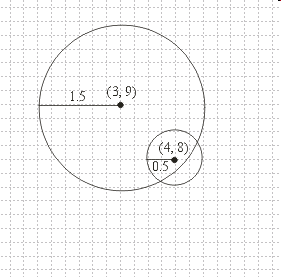
/**
* An objective function that illustrates the use of multidimensional
* minimization algorithms to solve a triangulation problem
*
* The problem is to find the intersection of two circles.
*
* @author Prof. David Bernstein, James Madison University
* @version 1.0
*/
public class TriangulationObjective extends Objective
{
private double[] ci, cj;
private double ri, rj;
/**
* Default Constructor
*/
public TriangulationObjective()
{
super(2);
ci = new double[2];
cj = new double[2];
// Attributes of one circle
ci[0] = 4.0; // x of center
ci[1] = 8.0; // y of center
ri = 0.5; // radius
// Attributes of the other circle
cj[0] = 3.0; // x of center
cj[1] = 9.0; // y of center
rj = 1.5; // radius
}
/**
* Evaluate the objective function
*
* @param xx A guess at an intersection point
* @return An indication of the extent of the error
*/
public double evaluate(double[] xx)
{
double di, dj;
// The estimated radii
di = Math.sqrt(Math.pow(ci[0]-xx[0],2.0)+Math.pow(ci[1]-xx[1],2.0));
dj = Math.sqrt(Math.pow(cj[0]-xx[0],2.0)+Math.pow(cj[1]-xx[1],2.0));
// Return the sum of the square of the differences between the
// estimated and actual radii
return Math.pow((di - ri),2.0)+Math.pow((dj - rj),2.0);
}
}